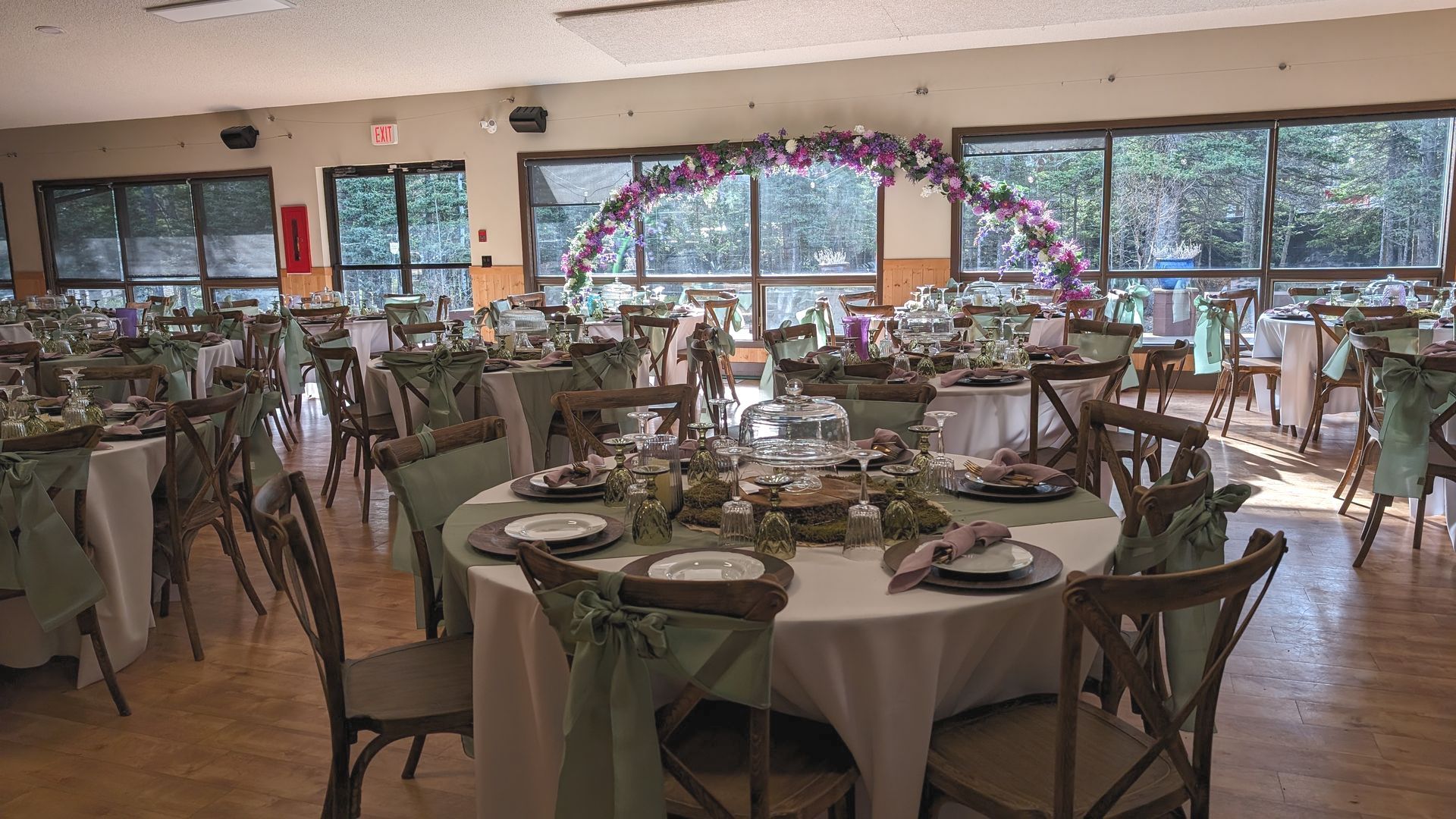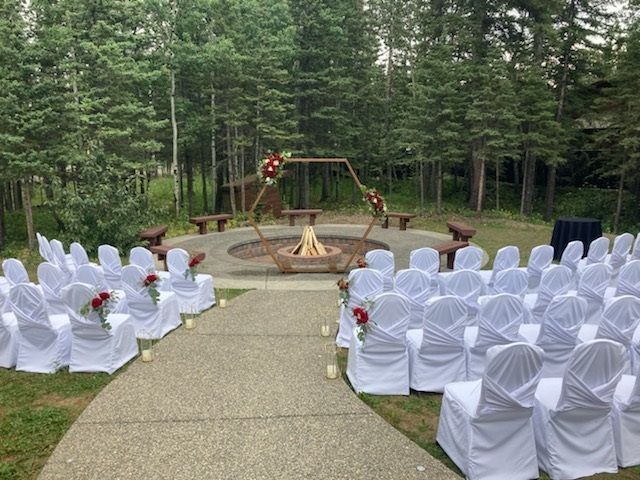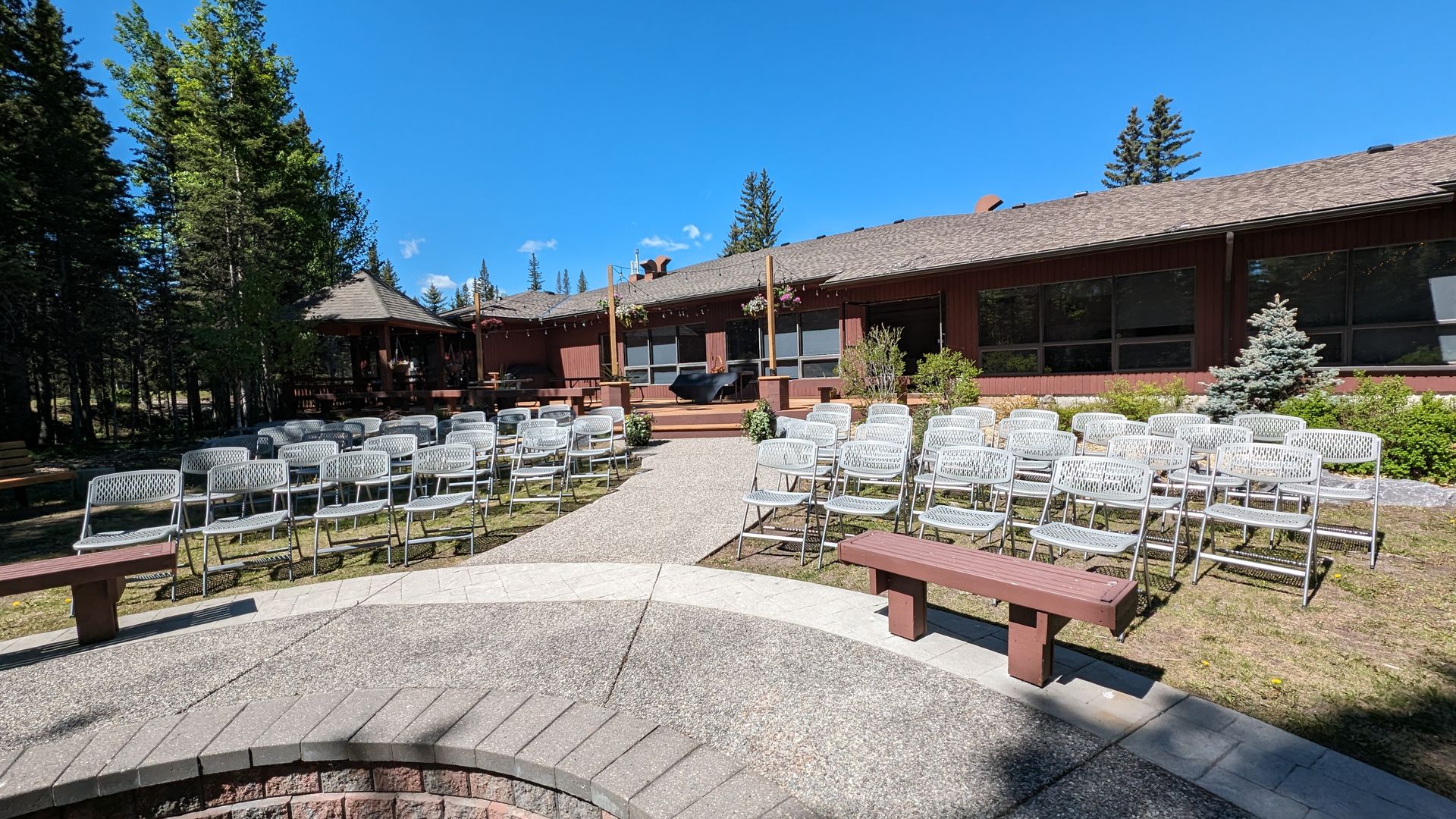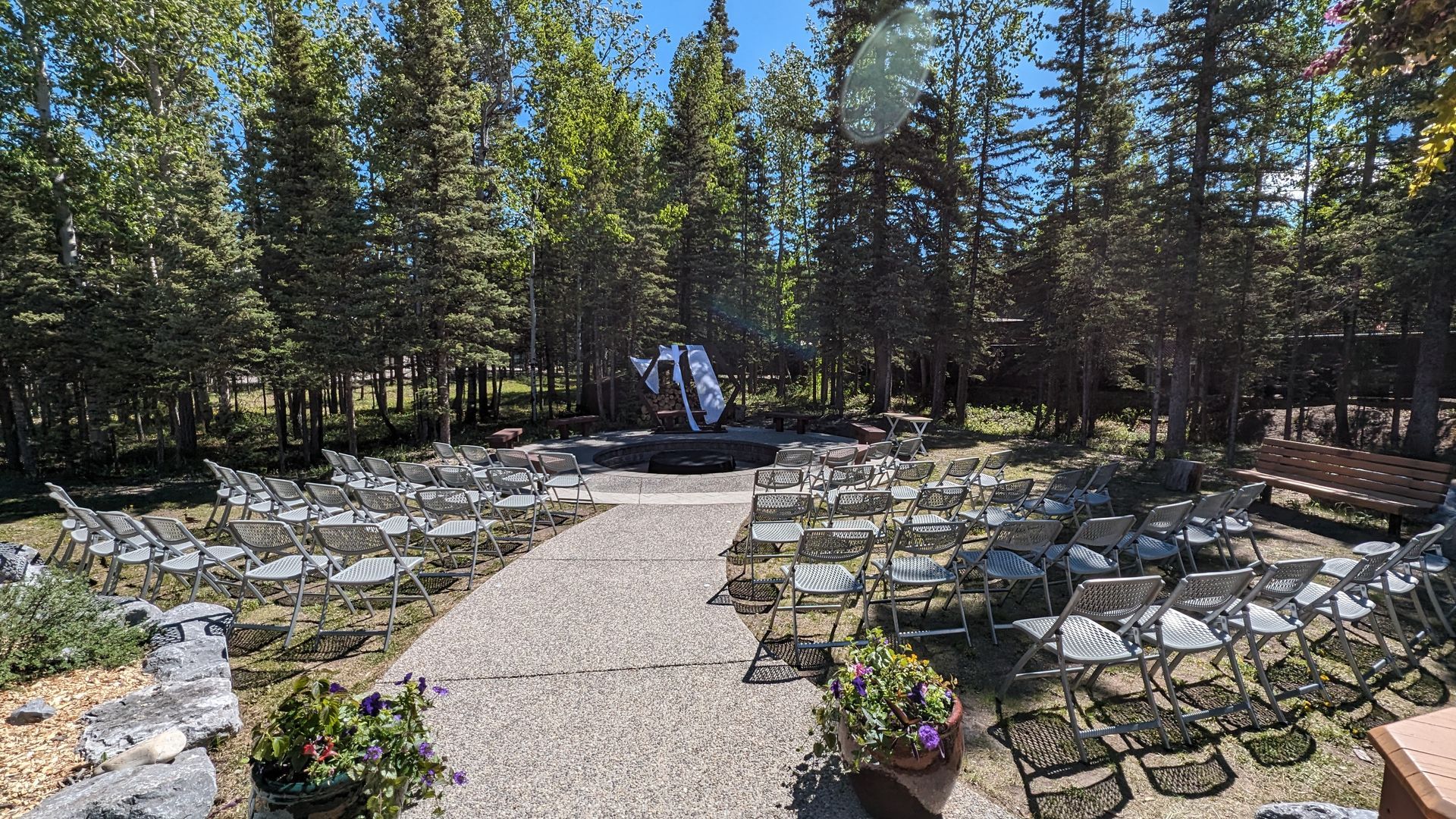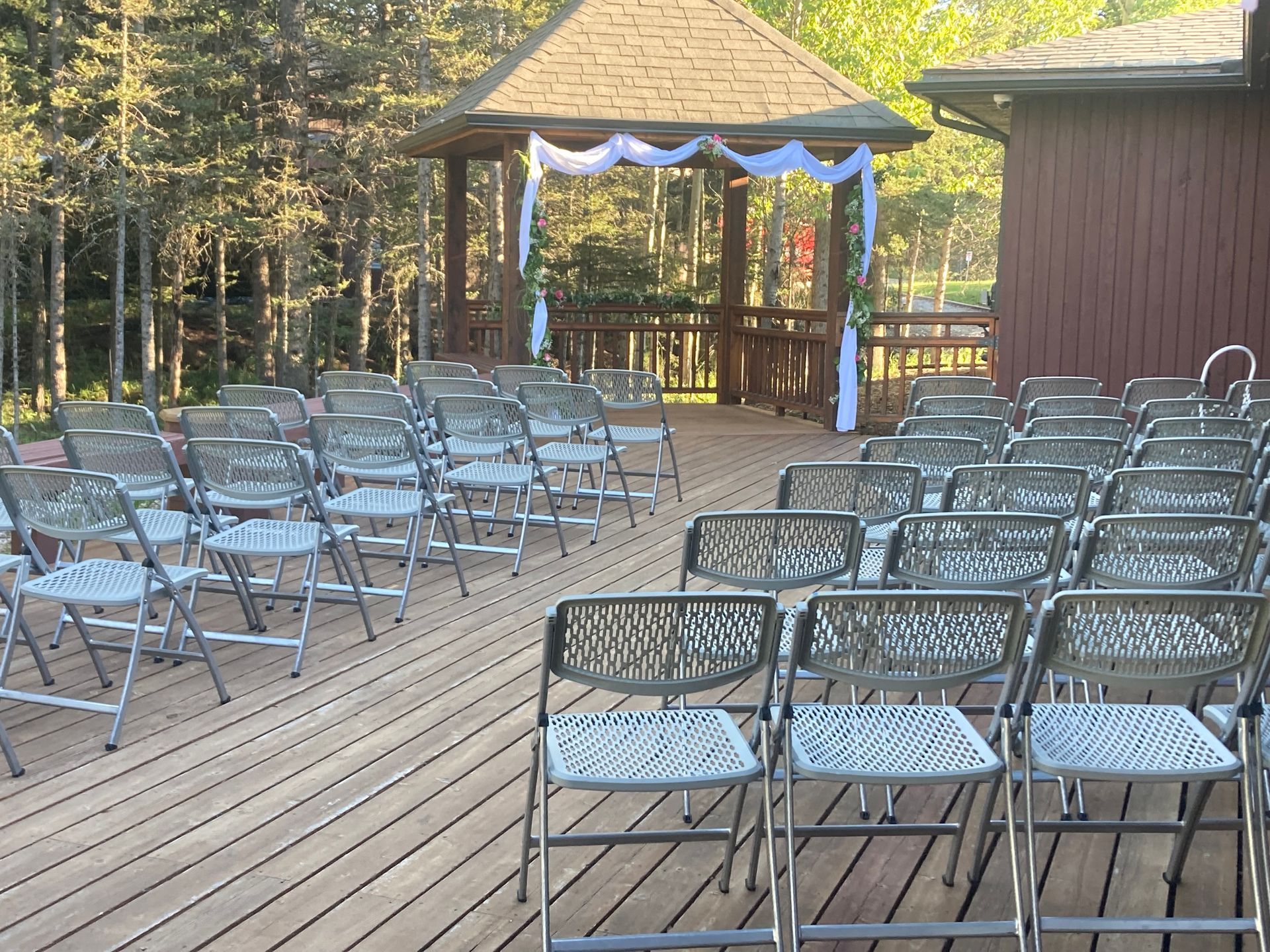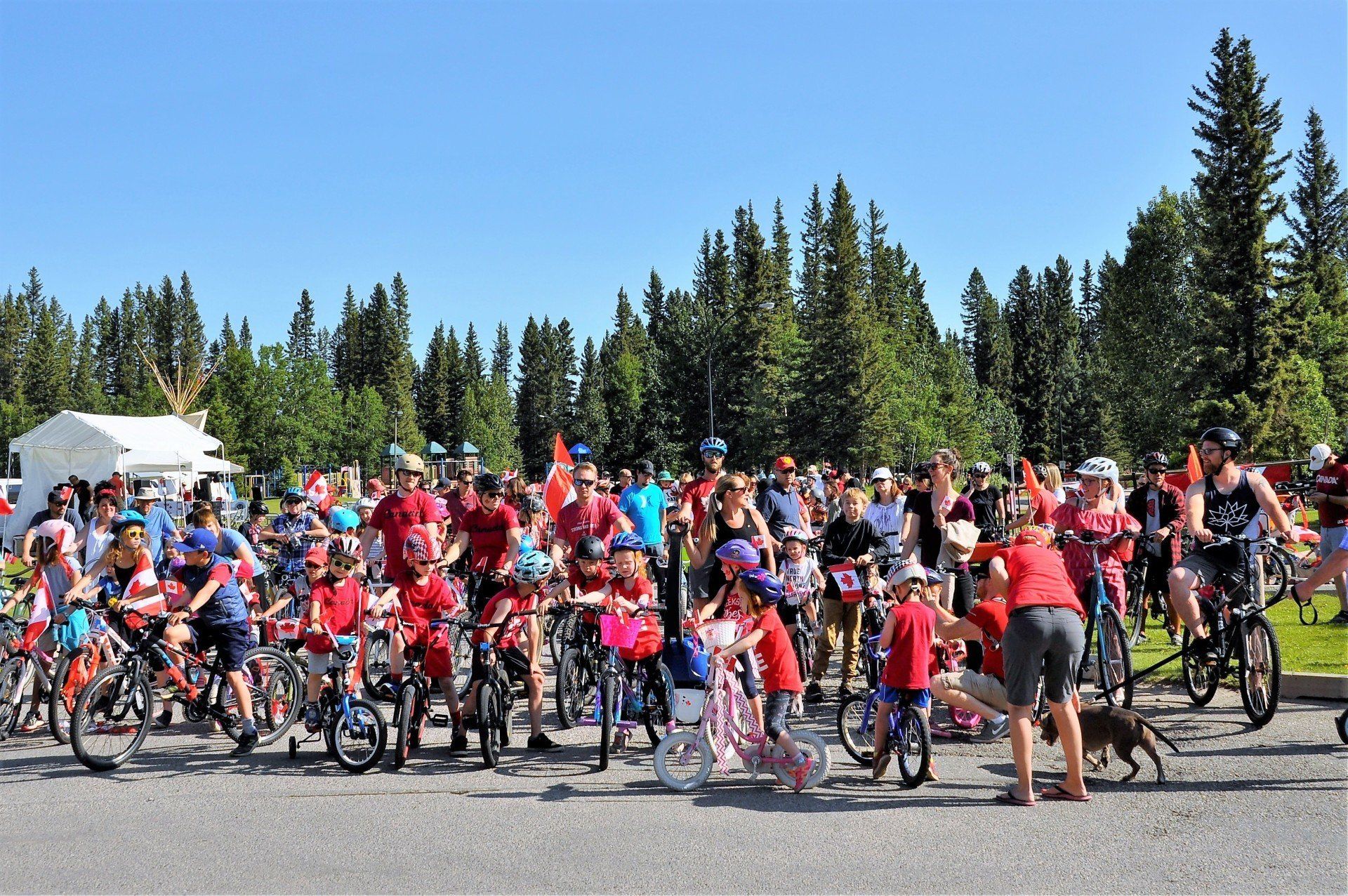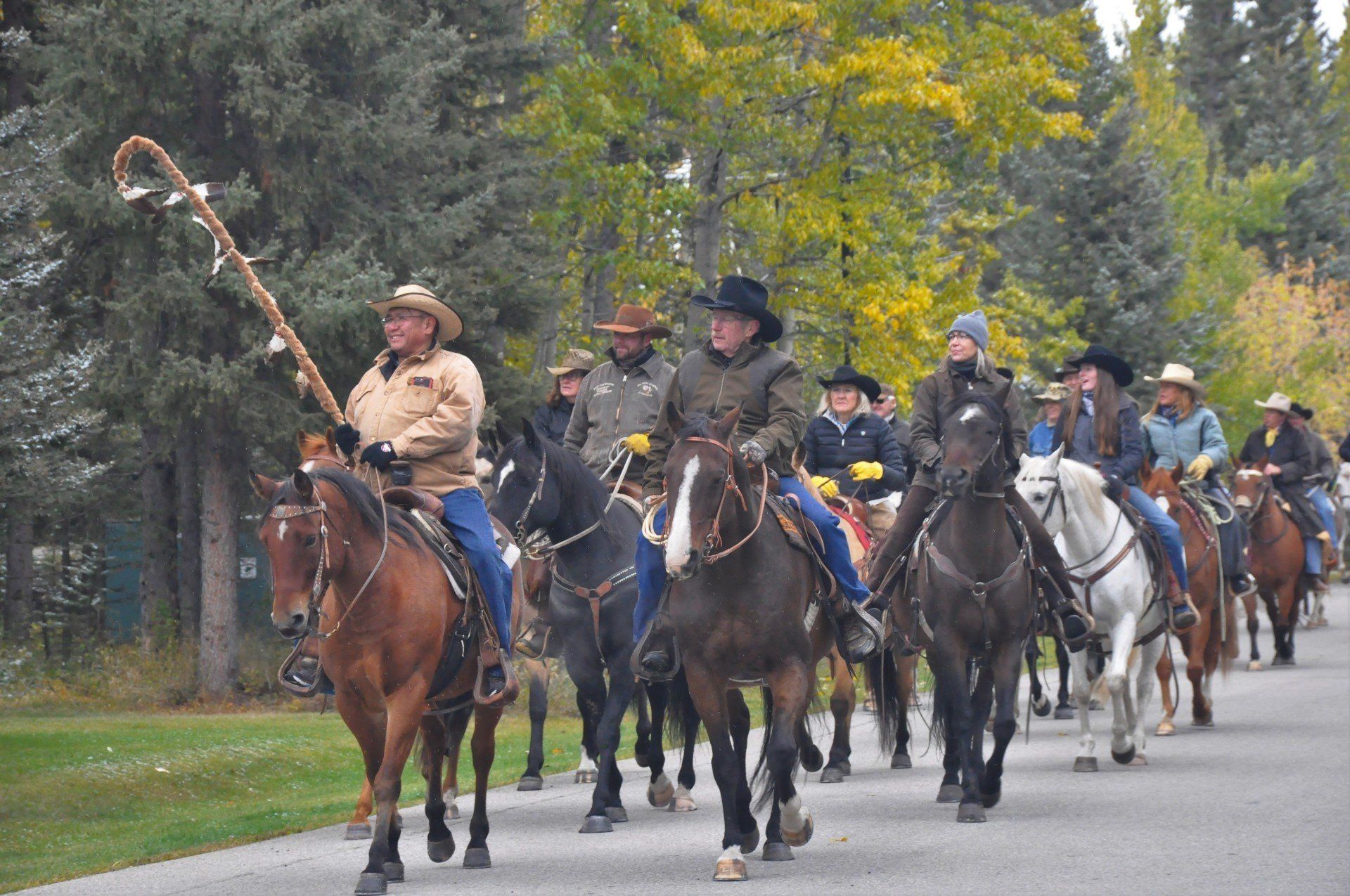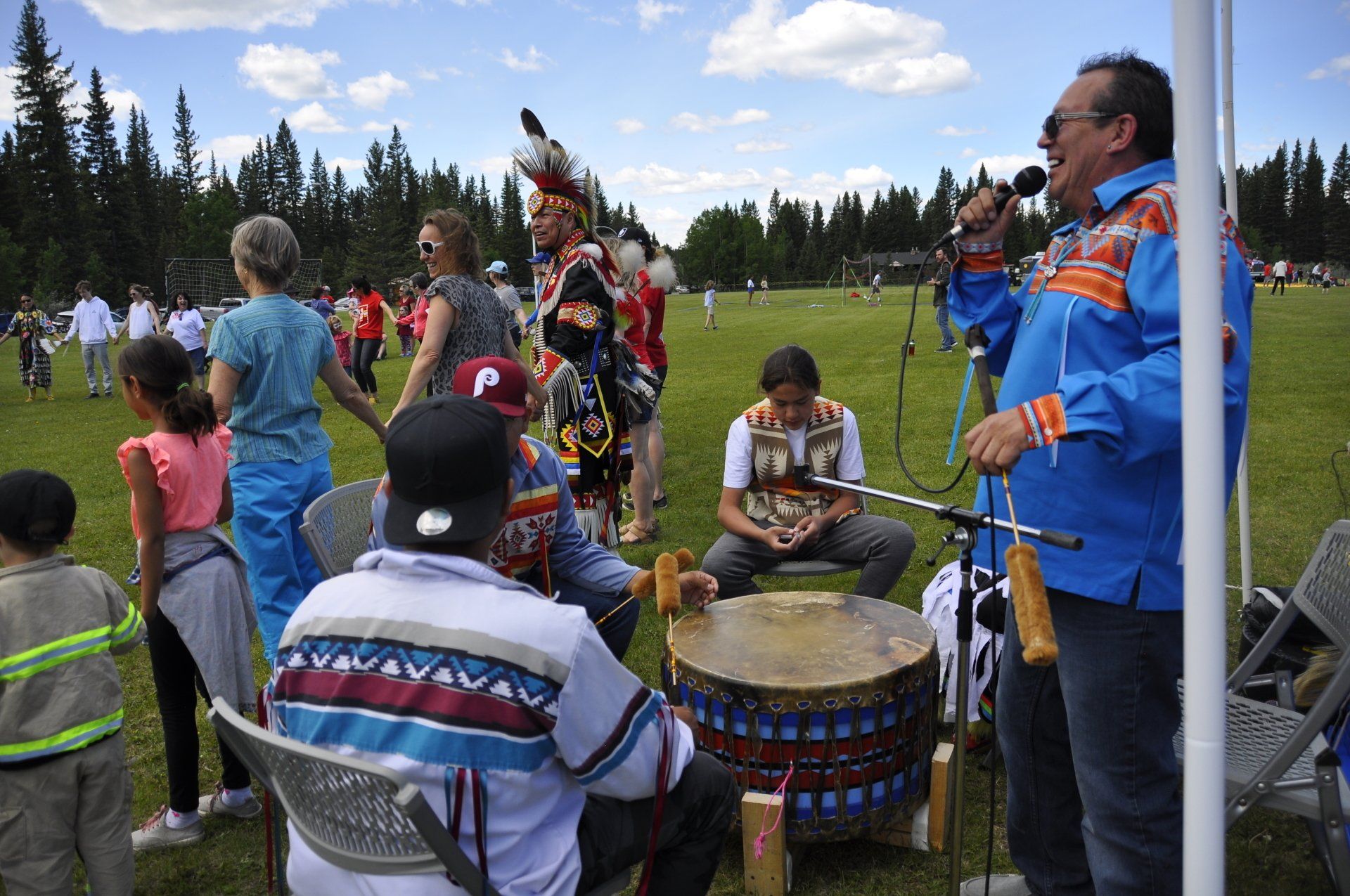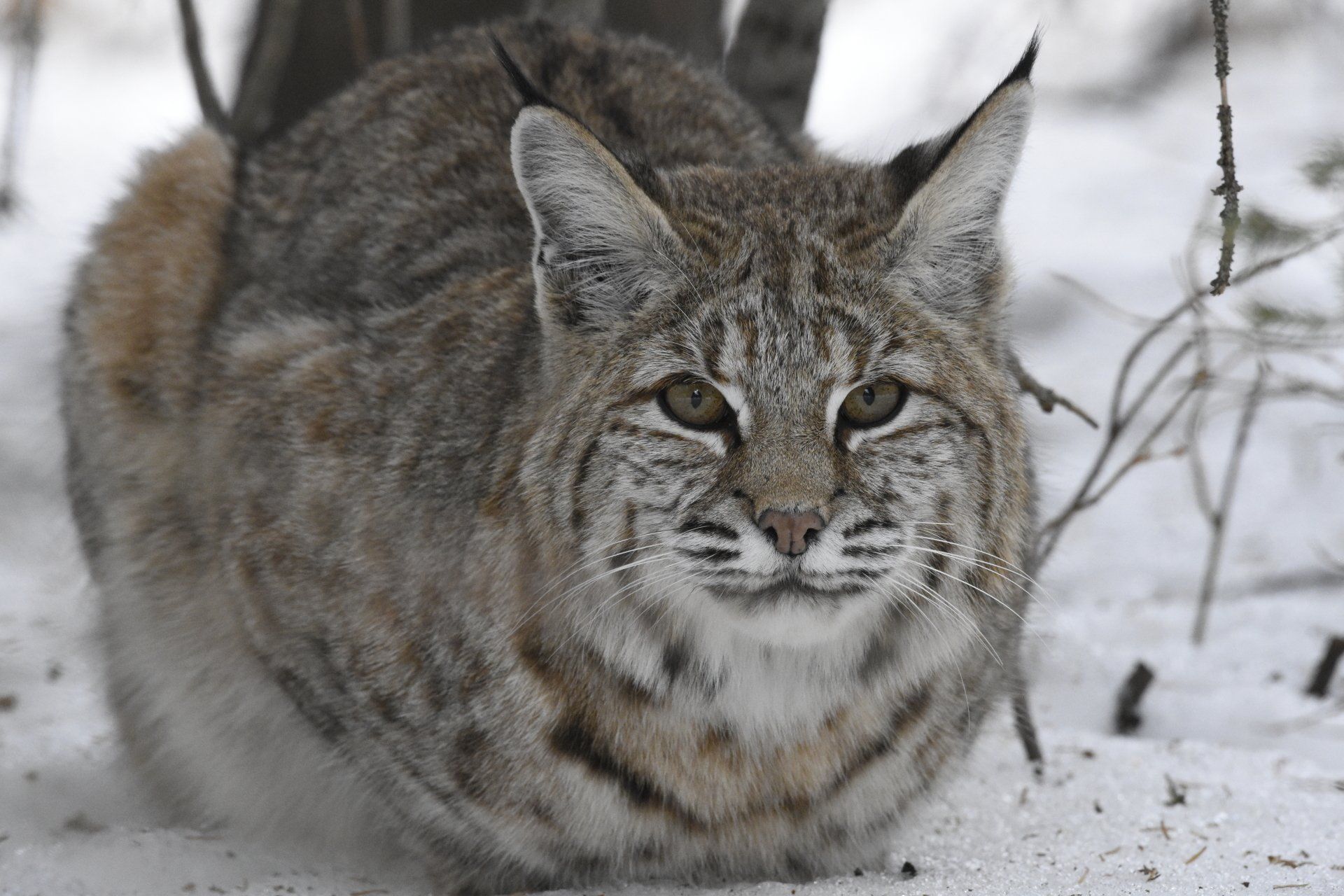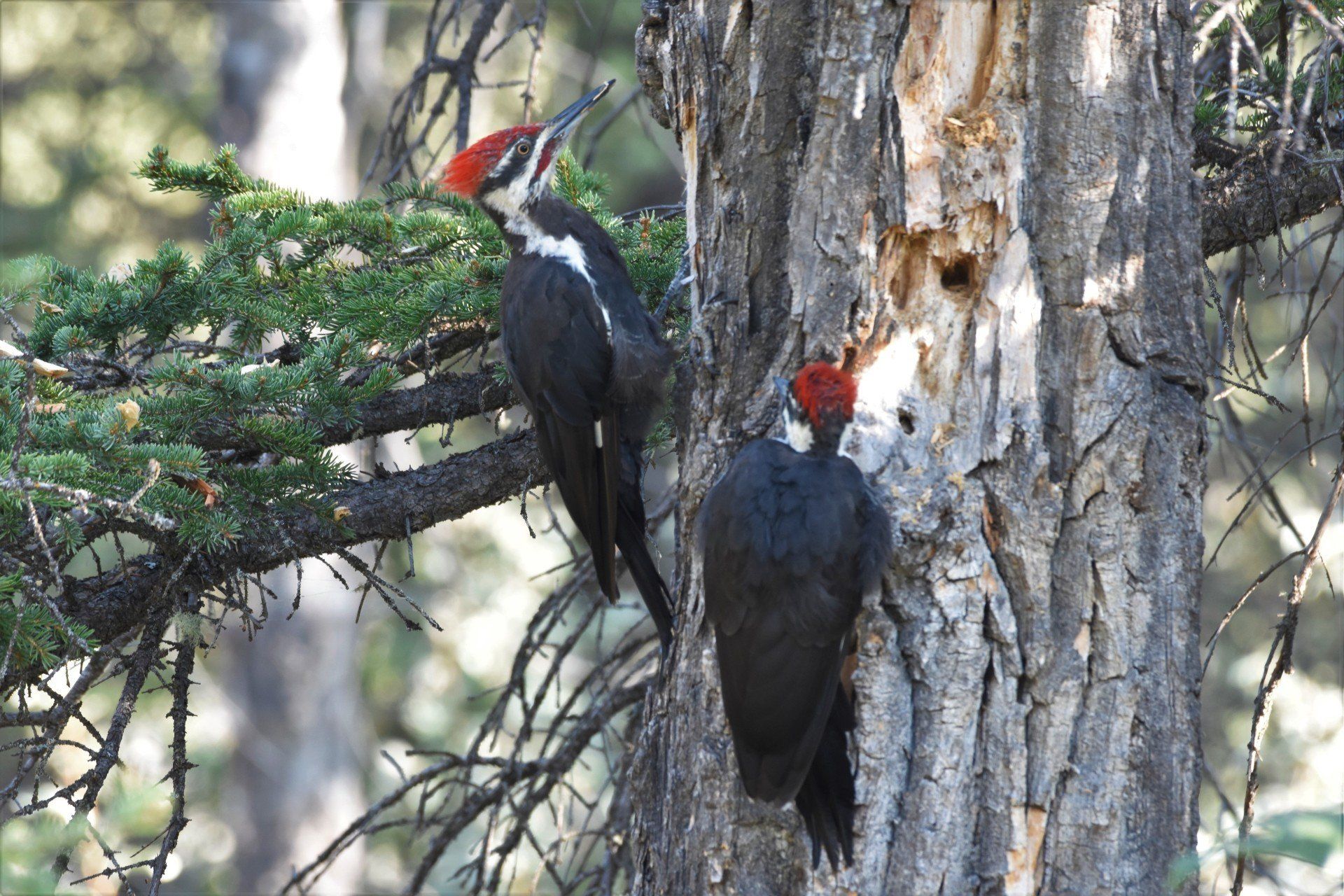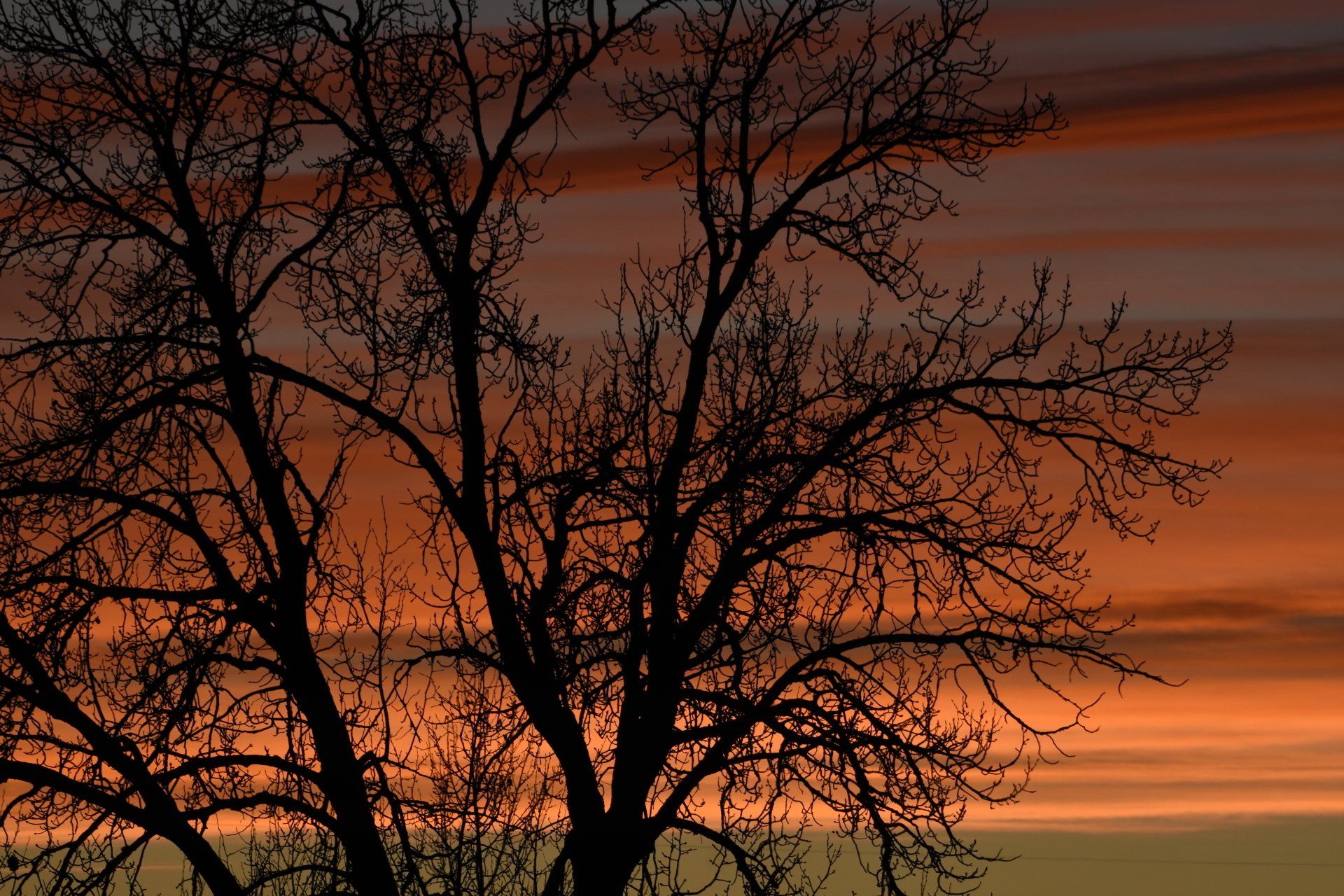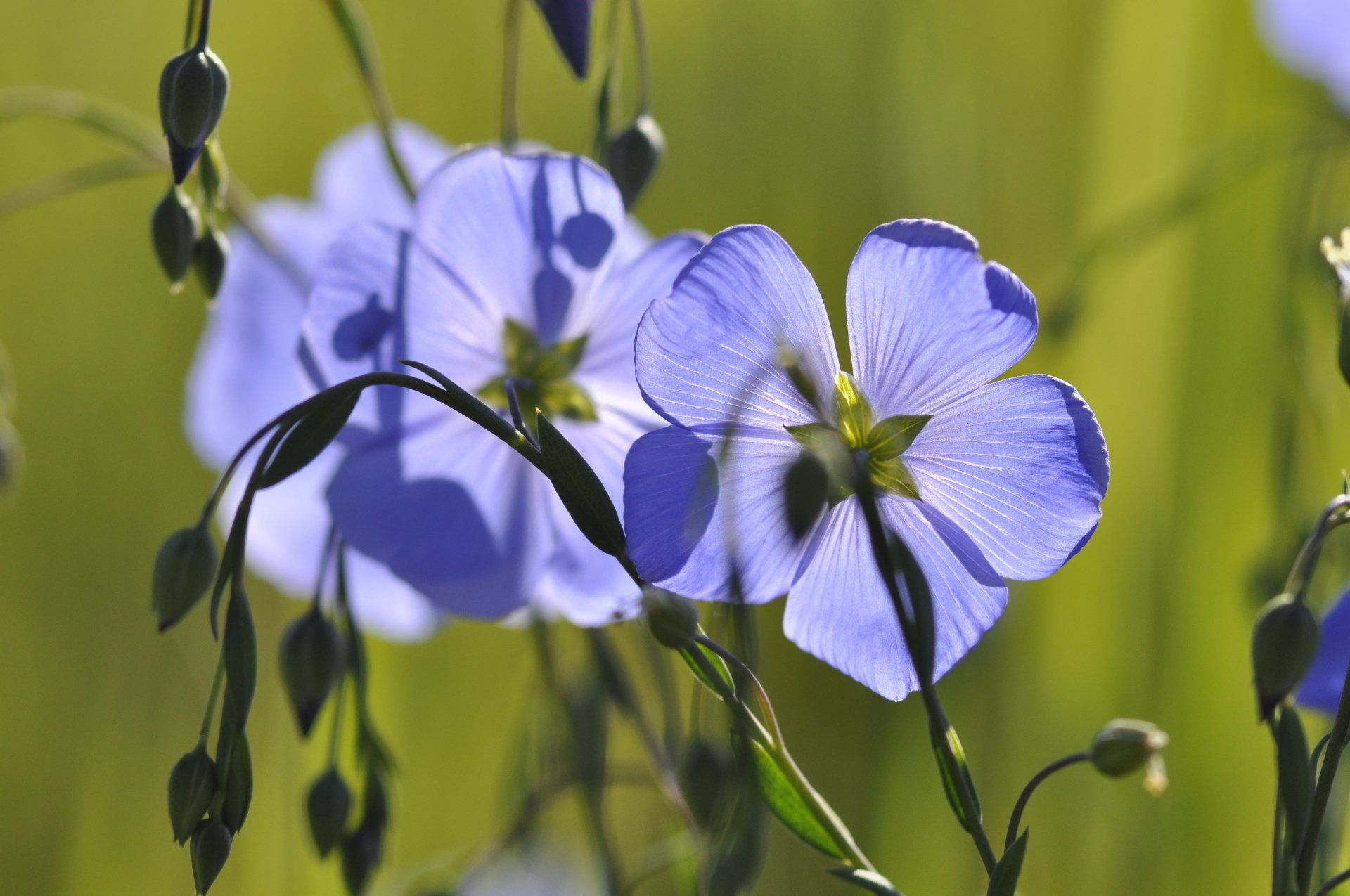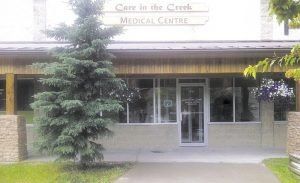COMMUNITY

Calendar of Community Events
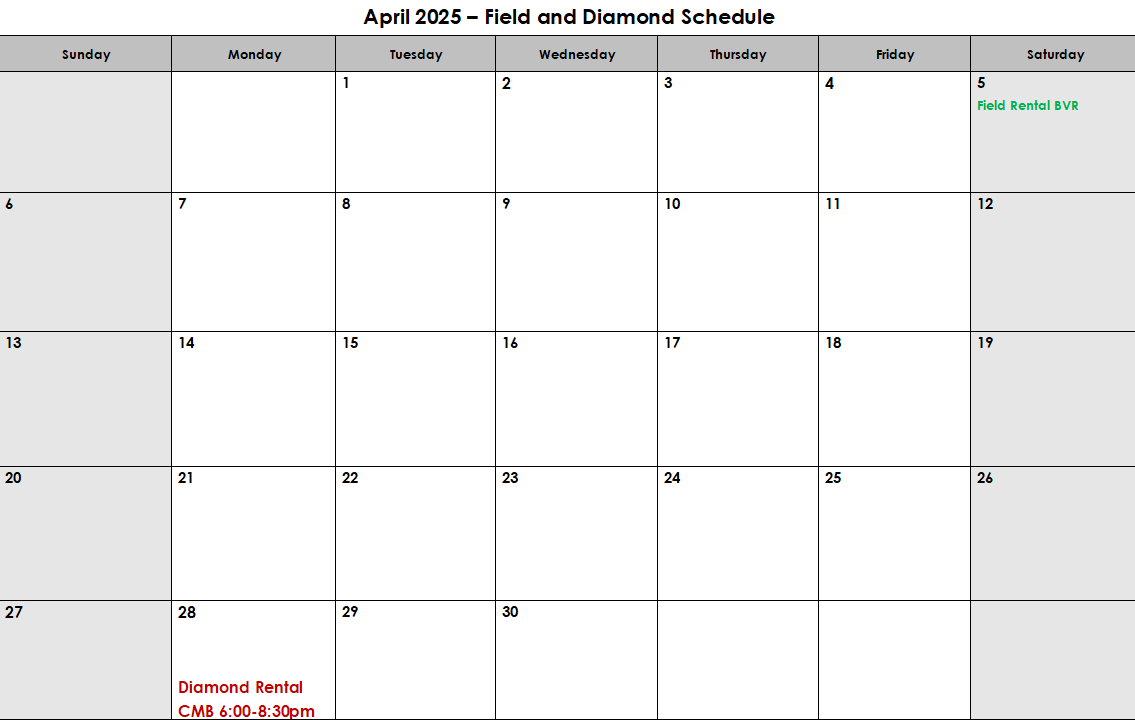
Redwood Meadows Community CentreFacility Bookings
Redwood Meadows Community Centre
Rental Rates & Guidelines
Wolf Willow Room Rental Rate: $2000 (150 person dining capacity)
- Includes use of our kitchen, bar, and outside deck (55 fold-out chairs) seats 50-70
- Includes table & chair rental
- Two bartenders included up to 8 hours, $25/hr each after 8 hours
- Use of the Wild Rose room
Additional Charges:
- 100% refundable damage deposit= $800
- Save the date= $50 (non-refundable and not transferable)
- Optional weekend rental with surrounding days rented for set-up and take down $250
Vendors: We would be happy to recommend catering, DJs, and other vendors you may need for your dream wedding!
**All fees are currently under review and subject to change**
Redwood House Information
Wolf Willow Room:
- 3280 sq. ft. (including kitchen and bar)
- Seats a maximum of 150 guests
- Woodland Patio (seats 70) with covered gazebo
- Indoor fireplace
Equipment & Furnishings:
- 180 upholstered chairs
- 55 fold-out chairs
- 20 x 5’ round tables (seats 8)
- 6 x 6’ rectangular tables
- 13 x 8' rectangular tables
Special Options:
- Fire pit (wood included) – $100
- Gas stove – $100
- Wooden Arch – $100
- 1080p projector with 135' screen – $60
- Surround sound system and cordless mic – $60
- BBQ – $60
- Popcorn machine – $20
+ $3.50/8 oz bag of kernels
Redwood Meadows Community Association
About the RMCA
The RMCA is the heart of Redwood Meadows Townsite. This volunteer based community group organizes most events in the Redwood Meadows community. Some of the community events include the Annual Easter Egg Hunt and Pancake Breakfast, the Parade of Garage Sales, Canada Day, Santa in the Woods, News Years Eve Fire Works and many more local events.
The group meets once a month to plan local events and discuss issues that affect the Redwood Meadows community. The meetings are open to anyone from Redwood who would like to share any of their ideas and/or concerns, to help plan events or take on a project to benefit the community.
If you are interested in joining the Association or volunteering for community events please attend one of our meetings, please contact us at info@rmca.ca
RMCA Agendas and Minutes
- 2024 Nov 6, 2024 AGM Agenda
- 2024 Feb 28, 2024 AGM Meeting Minutes
- 2021 AGM Agenda
- Jan. 12, 2021 Meeting Minutes
- Jan. 12, 2021 Meeting Agenda
RMCA Membership
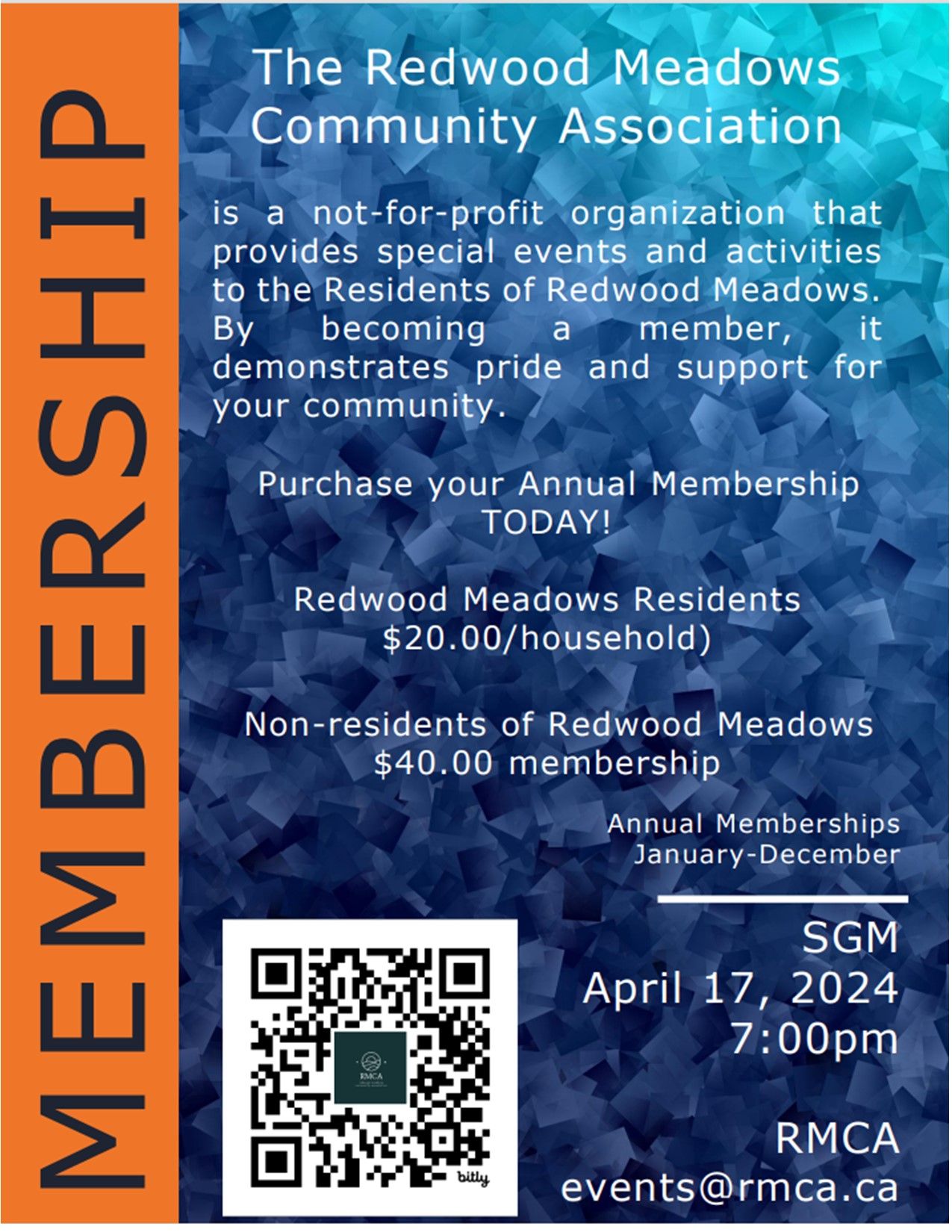
RMCA Executive Profiles (Coming Soon)
Annual Community Events and Recreational Activities
Canada Day - Monday July 1st 2024
Conservation and Sustainability
Conservation and Sustainability
Gardening with Native Plants
Living with Wildlife in Redwood Meadows
Our community is filled with a wealth of plant and animal diversity. Wildlife add to the quality of life that we enjoy and also act as an important indicator of the health of Alberta’s environment. Every day, in every season we share our Albertan community with many wildlife species.
Wildlife need space to feel comfortable. Please stay an appropriate distance away from them. Any wild animal may become aggressive if it feels threatened, so ensure pets are on leash and under control at all times. Please do not feed any wildlife it can cause dependency on and aggression toward humans, as well as unnatural feeding patterns and overcrowding. When we respect the needs of wildlife, we can help them to live natural, balanced lives.
To report a wildlife incident please contact Alberta Fish and Wildlife at 403-932-2388. If your call falls outside of office hours, please call Report a Poacher at 1-800-642-3800. The RAP line is available 24 hours a day and is toll-free across North America.
What can I do?
- Keep pets within your control at all times to reduce the potential for negative wildlife encounters.
- Do not feed wildlife. Some of the negative impacts associated with feeding wildlife include: unnatural feeding patterns and competition, overcrowding and disease, dependency on humans, aggression towards humans, and damage to landscape.
- De-clutter your yard and predator proof those areas that could potentially become denning sites such as under sheds and porches.
- Cover all openings such as eavestroughs, chimneys and vents to keep critters from entering unwanted places.
- Use protective wrap on trees to eliminate damage caused by rodents or deer.
- Reduce or eliminate yard maintenance chemicals such as synthetic fertilizers and pesticides as these substances can negatively impact wildlife and the ecosystem
Living with Bears
How can I keep bears wild and out of my backyard?
- Keep your garbage and recyclable bottles and cans in bear-resistant, airtight containers.
- Keep your compost indoors. Outdoor compost attracts bears. Look into using an indoor composter.
- Remove bird feeders from your yard in the months when bears are active – usually from the beginning of April until the end of November. Be sure to clean up any spilled bird seed from the ground.
- Clean your barbecues. Scrub your barbecue clean after each use and store it in a bear-resistant building, such as the garage or shed.
- Consider removing fruit trees and berry-producing bushes from your property. Bears are attracted to the fruit and berries.
- Never leave food out for wildlife.
- Talk to your neighbours. Let your neighbours know if you’ve seen a bear in the community, and talk to them about being BearSmart at home.
- Call Fish and Wildlife for more advice. Find your nearest Fish and Wildlife office by calling (403) 932-2388.
What should I teach my children about being safe around bears?
- Do not approach the bear or irritate it by yelling or throwing things at it.
- Never run away from a bear. Back away slowly and find a safe place, such as a building or vehicle.
- Stay with your group and back away from the bear together.
- As soon as you’ve reached a safe place, tell an adult that you’ve seen a bear.
- Stay away from areas that may attract bears, such as berry patches and along creeks and rivers.
- Bears are more active at dusk, night and dawn. Children should play close to the house and under supervision during those times.
How can I keep my pets safe?
- Always keep your dog on a leash. Keeping your dog on a leash keeps it under your close control. It also prevents the dog from sniffing out and provoking a bear into an encounter.
- Feed your pets and store pet food indoors. Keeping pet food outside can attract bears. If you must feed your pets outdoors, bring in the pet food and feeders overnight when bears are most active
If you encounter a bear…
- All bears are individuals so all bear encounters will be unique. Serious attacks are rare, but you must always be cautious and alert when in bear territory.
What should I do if I see a bear in my backyard?
- Do not panic. Do not run. Quickly and calmly collect your children and pets and go indoors.
- Notify your nearest Fish and Wildlife office. Call (403)932-2388 or 1-800-642-3800 if it’s after regular business hours.
- Once the bear has left the area, remove anything from your property that might attract a bear. Ask your neighbours to do the same. If food sources in the area remain available, the bear will likely return.
Living with Cougars
- Cougars are efficient predators that feed largely on deer. The rest of their diet consists of elk, moose, bighorn sheep and small mammals.
- A healthy cougar population is an indication of a thriving local ecosystem. In years when deer, elk and moose numbers are high, the number of cougars will be high.
- Cougars are active at all times of the day. If they enter open habitats and areas near humans, they typically do so when it is dark.
- It is very rare for people to hear the sounds cougars make. Cougars normally vocalize only when they are mating, feeling threatened or communicating with their kittens.
- Sightings have been on the rise in the last decade due to a greater number of people living and recreating in traditional cougar habitat and a healthy population of prey animals that has lead to growth in the cougar population.
- Sustainable Resource Development’s Fish and Wildlife Division never re-locates cougars as a means of controlling deer numbers in different areas of Alberta.
Living with Deer
- Wild animals are dangerous. By feeding wild animals, you may be conditioning them to expect food from people. Deer that lose their natural tendency to avoid people can become a significant threat.
- Deer can attract predators such as cougars, bears, and wolves. This would increase safety concerns and risk to people and pets.
- When deer are attracted to homes or farms, the risk for vehicle collisions increases. This can result in numerous deer fatalities, expensive vehicle repairs and human injury.
- Deer attracted to artificial or supplemental food sources will also feed on neighbours flowers, trees, shrubs or on farmers’ hay bales.
- A deer’s digestive system changes slowly with the seasons. In winter, their system adapts to allow them to digest relatively low quality food like twigs, buds and stems.
- Rapid or dramatic changes to this winter diet can lead to bloating, diarrhea, enteritis and in some cases, death.
- Deer have starved to death with full stomachs in winter because they could not digest high carbohydrate foods like hay, grains, corn and alfalfa.
- Deer will travel long distances to reach an artificial food source. This may increase exposure to predators and other hazards (ex: increased risk of vehicle collision with more frequent highway crossings).
- Natural processes limit deer populations to a level where they live in balance with their habitat. Winter mortality is normal in Alberta. This natural mortality varies from year to year, but helps ensure the deer population stays at, or below, what the habitat can support.
- Research shows that providing extra food can raise deer reproduction and survival rates. Deer populations can increase to levels too high for the habitat to sustain causing long-term damage to that habitat. This damage can affect the deer population, vegetation and a wide variety of other wildlife species that depend on the habitat for food, nesting or shelter.
- Deer gathered at artificial food sources have a higher risk of transmitting diseases such as bovine tuberculosis, chronic wasting disease, brucellosis and parasites to one another. Alberta Fish and Wildlife Officers can order people to stop feeding wildlife due to concerns about the health and safety of wildlife, the safety of people or to prevent property damage. Additional enforcement action, up to and including charges and possible fines, may occur if orders issued are not adhered to.
Living with Coyotes
Education
Schools in the Area
- Banded Peak School - Bragg Creek: Grades K-8
- Elbow Valley Elementary School - Springbank: Grades K-4
- RVS Community Learning Centre - Campus in Cochrane: Grades 1-12
- Springbank Community High - Springbank: Grades 9-12
- Springbank Middle School - Springbank: Grades 5-8
Separate Schools
Post-Secondary Education
Health and Wellness
Health and Wellness in Redwood Meadows
There are many service providers in our area addressing overall health and wellness. From Yoga studios, to chiropractic care, to physiotherapy to overall mindfulness there are many businesses that are providing care to our community. Please see below for links to some of our local providers.
Care in the Creek is a family healthcare practice located in the heart of Bragg Creek, AB offering preventative and primary care for people of all ages.
In 2009 a group of dedicated local residents got together to establish and steward sustainable primary health care in the Greater Bragg Creek area, Care in the Creek Medical Centre (CITC) was their brainchild. Care in the Creek opened its doors to the first patients in August 2012, and still stands as a ’one-of-a-kind’ success model of what is possible when a community comes together in partnership with other health-care stakeholders to achieve a desired outcome. Care in the Creek has become a model for other rural communities in addressing their needs for bringing primary care services to their community members.
Phone: 403-949-2457
Fax: 403-949-2424
Email: [email protected]
Address: Care in the Creek
Volunteer Opportunities
Volunteer Opportunities in Redwood Meadows Alberta
One of the best features of our community are our fabulous volunteers! Please use the sign up form if you are interested in volunteering in Redwood Meadows. Remember to include your area of interest! Please Note: This is for the Community Association and NOT the fire department. Please contact Redwood Meadows Emergency Services directly for volunteer firefighter positions.
Volunteer Opportunities
The Chatter Newsletter
Newsletter Archive
The Chatter is currently on a break. We hope to have it back soon
- December 2022
- November 2022
- October 2022
- September 2022
- June 2022
- May 2022
- April 2022
- March 2022
- February 2022
- January 2022
- December 2021
- November 2021
- October 2021
- September 2021
- June 2021
- May 2021
- April 2021
- March 2021
- February 2021
- January 2021
- December 2020
- November 2020
- October 2020
- September 2020
- June 2020
- May 2020
- April 2020
- March 2020
- February 2020
- January 2020
- December 2019
- November 2019
- October 2019
- September 2019
- July 2019
- June 2019
- May 2019
- April 2019
- March 2019
- February 2019
- January 2019
- December 2018
- November 2018
- October 2018
- September 2018
- June 2018
- May 2018
- April 2018
- March 2018
- February 2018
- January 2018
The Chatter Newsletter is printed on the first day of every month except July and August. The deadline to submit an ad is the 20th of the month prior to publication.
Links to the newsletter are posted on Facebook and distributed via email to subscribers. Additionally, paper copies are available at the mailboxes in Redwood Meadows, Redwood House, and the Bragg Creek Community Centre.
Click here for prices: The Chatter Newsletter Advertising Rates
If you have any questions or you would like to place an ad, please contact us at the[email protected] .
Thank you for your ongoing support of local community news!


